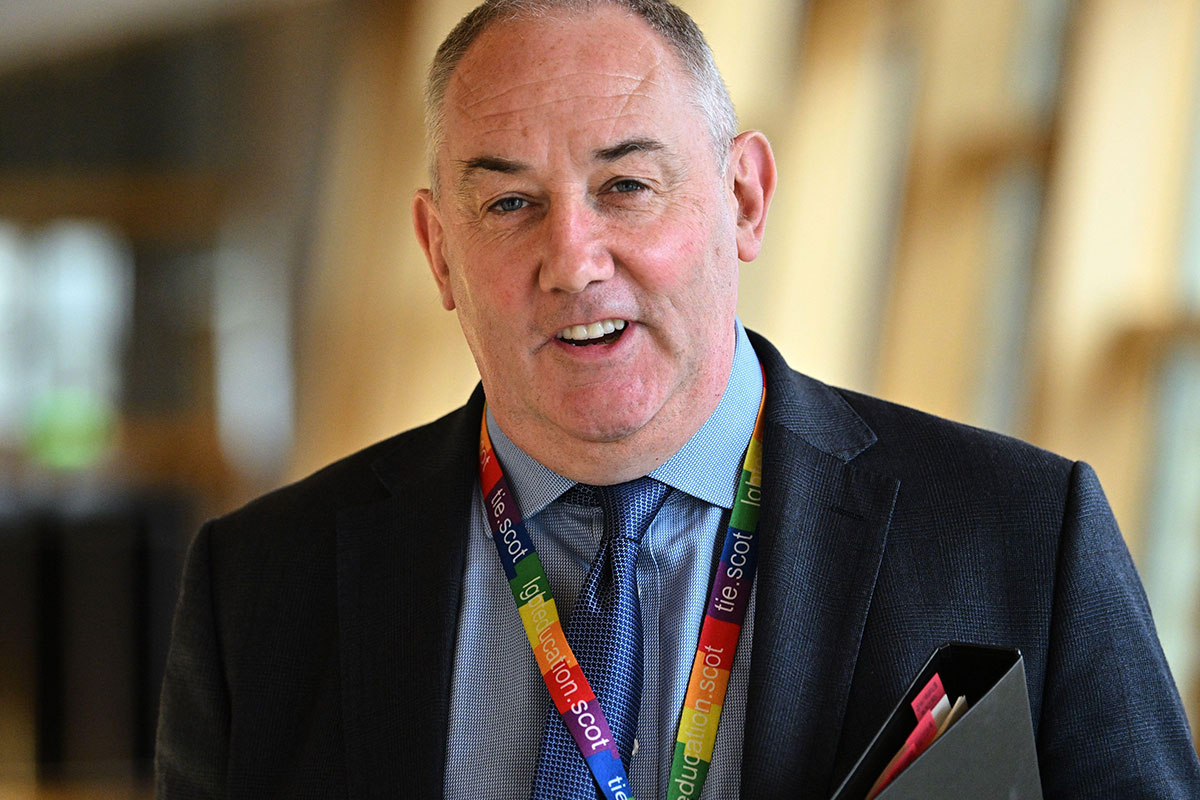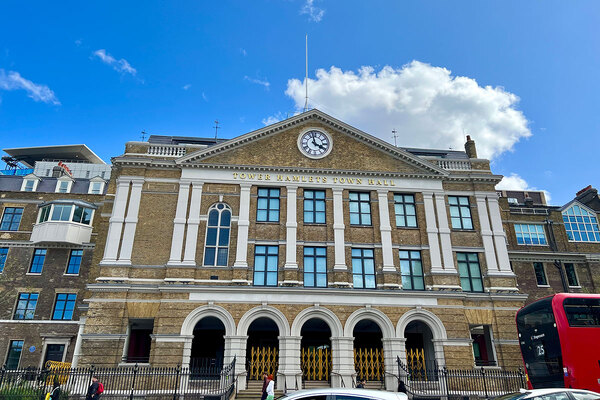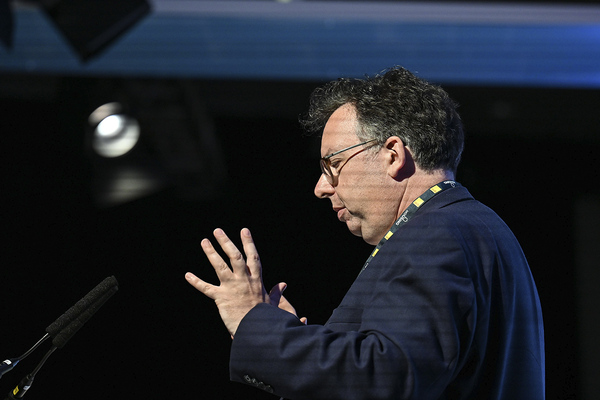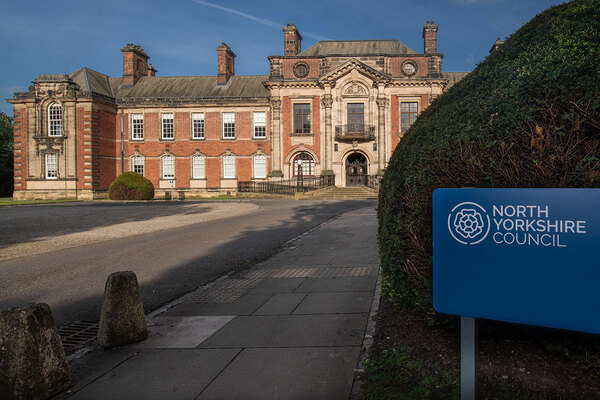You are viewing 1 of your 1 free articles
How to spot domestic extremists
A number of housing professionals have been receiving training in how to detect extremists. Nick Duxbury investigates the implications
‘You look lost, dear, are you here for counter-terrorism?’ enquires a grandmotherly lady from the steps of a cricket pavilion. ‘It’s just in the next room on the left.’
Entering the Wigan Cricket Club clubhouse, the smell of freshly cut grass and the lulling whine of a lawnmower is replaced with the musk of spilled ale and the polite, nervous chatter of around 30 housing professionals from 13,000-home north west housing association Adactus.
Plastic chairs are arranged between the tables. A post-match tea feels like it should naturally be on the agenda. But instead, two detective constables from the North West Counter Terrorism Unit of the Greater Manchester Police set up shop at the front of the room.
The room is an eclectic mix of housing professionals from front line to back office staff; paint-flecked branded fleeces sit by suits and floral dresses. Today everyone is going to learn how to fight terrorism - or, to be more accurate, they will learn how to identify and prevent radical extremism (the difference being that the former term focuses on the resulting act, while the latter describes both the cause and effect).
Fighting the threat
Teaching housing professionals to detect extremists might seem to be as out of place as discussing terrorism in the gentle environs of a cricket club. But there’s an edge to the proceedings, given that they came about following what Paul Lees, chief executive of Adactus, will describe only as ‘a serious incident’.
In the wake of this incident, he met DC Asif Khan and DC Darrel Cunningham at the 2013 Chartered Institute of Housing conference in Manchester and invited them to come in and speak to his staff. One year on, the majority of the 625 Adactus staff have received the training, and contractor Mears Group is pushing it out across its 17,000 staff. ‘Terrorism is a threat we are aware of and we feel we have a role to play in being vigilant,’ Mr Lees explains. He adds that several potential incidents have been flagged as a result of the training.
The course was first used internally by the police before being adopted by the fire service and companies such as British Telecom that send lone operatives into homes. Now GMP is training up more of its own staff to visit social landlords free of charge and is looking to roll out the practice across the UK - with other forces taking responsibility in their areas. The ultimate aim is for landlords to develop in-house training that will become normalised as part of everyday safeguarding best practice.
So why is fighting the threat of terrorism relevant to housing professionals - and what should they actually do? From the police’s point of view, of course, some of the vulnerable people who are targeted for radicalism - usually low-income, sometimes mentally ill - will live in social housing. Landlords have to visit the properties and communicate with their tenants, so are in an obvious position to spot, and report, signs of radicalisation or extremism. ‘If you look at every single incident we have dealt with, there is a high potential that a lot of them would be from [residents of] registered social landlords,’ says DC Cunningham. ‘Sometimes the residents in a property are not who you think they are.’
There have been several terrifying examples of this - take the murderers of soldier Lee Rigby in Woolwich last year. To his neighbours in the Macey House council block nearby at Cutty Sark on the banks of London’s Thames where he grew up, Michael Adebowale, 22, was considered another nice, polite, ‘normal’ kid. People recalled him supporting Manchester United and hanging out in a local Wetherspoons. Now his crazed, blood-soaked image will be forever bleached into their memories. The seeds of radicalism were sown on their doorsteps and no-one noticed - or, if they did, they didn’t report anything. This is a common story.
DC Cunningham picks an example much closer to home. A couple from Oldham - Mohammed Sajid and his wife Shasta Khan, a local hairdresser, who were jailed in 2012 for plotting a bomb attack on the Jewish community in Bury. Mr Sajid was given an indeterminate sentence, with a minimum of seven-and-a-half-years, while his wife received eight years. Police discovered a cache of terror-related material after being called to the couple’s home in July 2011 following a domestic dispute. In the house was peroxide and bleach, Christmas tree lights, bulbs and a battery - which, with the aid of an Al-Qaeda magazine article entitled ‘make a bomb in the kitchen of your mom’, they intended to build an improvised explosive device.
Once again, neighbours believed they were nice, ‘normal’ people. Despite having seen the pair mixing and boiling chemicals in a BBQ in the back garden, no one thought to say anything.
Gut feeling
So this begs the question - how do you spot a would-be terrorist? DC Cunningham describes a terrorist as ‘someone who uses violence, or the threat of violence, to achieve a political outcome’.
‘There is no specific religion or belief that fits that,’ he says. ‘The political end could be to stop fracking, Fathers for Justice, anti-immigration - anything in the run-up to the election. They are normal people next door who blend in.
‘You need to use your gut feeling as professionals because they [extremists] are not going to be walking around wearing a balaclava, brandishing an AK47 and religious text.’
Instead, DC Khan suggests professionals apply a traffic light system to assess risk, and decide whether or not to report something. He gives examples.
‘I have already seen three Adactus vans in the car park. If something goes missing from one of those vans - or the van goes missing - this is the kind of thing that we need to know about. Because no one will challenge a landlord in a van.’
DC Khan adds: ‘If I put an Adactus high-visibility vest on then I can access places I otherwise wouldn’t. A uniform gives a sense of security and trust.’
A slide showing a typical estate streetscape pops up. ‘You need to look out for specific indicators,’ instructs DC Cunningham. Many of these are common sense. ‘If you see a £15,000 house with £30,000 of security, then what signals is that sending you? If there are bars on the windows and it smells of chemicals… then maybe you don’t go in,’ adds DC Khan.
Another, less obvious example, is to be cautious about parking; don’t park directly outside a house, the police advise. ‘If you park just outside then you are committed to whatever is inside. You should drive by once, risk assess it, turn around and then come back, so that you are good to go regardless of what happens,’ points out DC Cunningham.
‘Do you have an exit plan when you enter the property? You should always have a plan to get out safely, no matter how benign - have an excuse, maybe a trigger word, like “I’ll need to go get the purple file”.’
A slide showing the bedroom of a 12-year-old girl living in a council house pops on screen. The walls are draped with swastikas and a white power flag. ‘This little girl was not a terrorist or an extremist, but she is vulnerable and needs safeguarding,’ says DC Cunningham. ‘Her dad was locked up for preaching violence.’ In this case, he says, there should be a clear system of reporting internally so that it can be risk assessed and potentially passed on to the relevant agency.
‘Recognise, record and refer,’ he instructs the room. ‘An appropriate response is not always a police response - sometimes it will be social services.’
Acting on concerns
In some cases the landlord itself is best positioned to intervene. Arm’s-length management organisation Your Homes Newcastle, for instance, was contacted by police in 2011 over concerns that one of its tenants had been radicalised. ‘They asked us if we would be prepared to visit his flat and check out if there were any signs of radicalisation, and that proved to be a successful case,’ recalls Neil Scott, director of tenancy services at 27,000-home YHN. ‘The housing manager who visited made some observations in the flat, but through knowing the chap, was able to talk to him quite openly about some contact with individuals in the city which went back to the police.’
However, social landlords do have concerns about how this could be perceived by tenants. ‘The basic principle of talking to counter-terrorism people is sound - because at the moment there is no dialogue at all,’ says Tony Stacey, chair of the Placeshapers group of 100 associations and chief executive of South Yorkshire Housing Association. ‘But we need to be cautious about what this would do to confidence of the communities, of tenants and of housing officers.’
GMP is sensitive to this point.
‘You can’t use this to be a secret agent,’ DC Khan cautions the room. ‘This doesn’t enable you to start spying on people, rooting around in bins. We don’t want you to be perceived as deputised police - there are no sew-on badges.’
There are plenty of reasons for landlords to listen. Political pressure for all sectors to be seen to be doing everything it can to tackle extremism is mounting. The government’s long-standing Prevent agenda has tried to instil greater resilience to radicalism within communities, the health sector and in schools. However, with controversy over alleged failures to stem the influence of extremism in schools all over the front pages and the current UK terror threat rated as ‘substantial’ by MI5, it seems only a matter of time before the political eye turns to the housing sector.
After all, there could be consequences for landlords that miss the opportunity to prevent an extremist. ‘A front line member of staff needs to know that if they report something there will be a proportionate response,’ says DC Cunningham. ‘If organisations think they need to involve the police, the fire brigade, social services - whoever it is - then that’s what they should do. If they [landlords] fail to do that - well, that’s untested. I would hate for someone to be hurt as a result of them not responding to a concern raised by a front-line operative.’
It’s clearly a fine line that landlords are being asked to tread. But for some landlords, like Adactus, it’s an issue they feel a responsibility to address.
Whitehall’s Prevent strategy
The Prevent programme is the one of the government’s responses to the terrorist threat in the UK and has three key elements:
- First, the government responds to the ideological challenge of terrorism and the threat from those who promote it. In doing so, it emphasises that the ideology of extremism and terrorism is the problem; legitimate religious belief is not.
- Second, the government prevents people from being drawn into terrorism and ensures that they are given appropriate advice and support. They will build on the successful multi-agency ‘channel’ programme, which identifies and provides support for people at risk of radicalisation.
- Third, the government works with sectors and institutions where there are risks of radicalisation. This includes health, social care and education providers, as well as addressing the challenge of radicalisation on the internet.
All relevant front line staff are trained in the responsibilities of Prevent as well as introducing and embedding processes to identify and protect those who may be at risk of radicalisation. There should also be processes for escalating concerns to the police.








